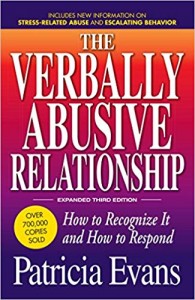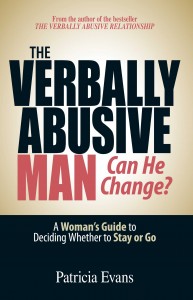Kerby Anderson looks at pornography from a biblical worldview perspective. He clearly chronicles the physical, emotional and spiritual harm created by pornography and lays out the scriptural warnings to protect us from its degrading effects.
Pornography has been tearing apart the very fabric of modern society, but the problem has been made much worse with pornography’s proliferation through the Internet. Studies show that 40 million adults regularly visit Internet pornography sites.{1} To put that in perspective, that is ten times the amount of people who regularly watch baseball.
 When I first started writing about pornography in the 1980s, it was already a multi-billion dollar-a-year business mostly promoted through so-called “adult bookstores” and pornographic magazines. With the development of videos, DVDs, and the Internet, pornography has become ubiquitous.
When I first started writing about pornography in the 1980s, it was already a multi-billion dollar-a-year business mostly promoted through so-called “adult bookstores” and pornographic magazines. With the development of videos, DVDs, and the Internet, pornography has become ubiquitous.
The wages of sin are enormous when pornography is involved. Revenue from Internet porn exceeds by nearly a 2 to 1 ratio, the combined revenues of ABC, CBS, and NBC.{2} And sales of pornographic material on the Internet surpass the cumulative sales of all other products sold online.{3}
The current estimate is the there are over 4 million pornographic websites representing almost 400 million pages of pornographic material.{4}
Pornography is not just something a few men view in the late hours in the privacy of their homes. At least 70 percent of porn is downloaded during work hours (9 am to 5 pm). A percentage of those who do so admit to accessing pornography at work.
And pornography also affects those in church. According to Leadership Journal, 40 percent of pastors admit to visiting a pornographic website.{5} And at one Promise Keepers Convention, 53 percent of men admitted to visiting a porn site the week before.{6}
The impact pornography is having on young people is alarming. It used to be that when you would ask someone when they first saw pornography they would tell you a story about seeing a porn magazine at a friend’s house when they were in middle school or high school. Now a child in grade school has already seen images that were only available in an adult bookstore a few years ago. At one time these images were inaccessible to youth; now they are merely a mouse click away. The average age of first exposure to Internet pornography is 11 years old. And the largest consumer of Internet pornography is the 12-17 age group.{7}
How should we define pornography? What is the effect on individuals and society? And what is a biblical perspective on this? I deal with each of these questions in detail in my book, Christians Ethics in Plain Language.{8} In the next section, we address some of these questions.
Definition and Types of Pornography
How should we define pornography? Pornography has been defined as material that “is predominantly sexually explicit and intended primarily for the purpose of sexual arousal.” Hard-core pornography “is sexually explicit in the extreme, and devoid of any other apparent content or purpose.”{9}
Another important term is obscenity. In the 1973 Supreme Court case of Miller v. California, the justices set forth a three-part test to define obscenity:{10}
(a) The average person, applying contemporary community standards, would find the work, taken as a whole, appeals to the prurient interest.
(b) The work depicts or describes, in a patently offensive way, sexual conduct specifically defined by the applicable state law, and
(c) The work, taken as a whole, lacks serious literary, artistic, political, or scientific value.
What are the types of pornography? The first type of pornography is adult magazines, which are primarily directed toward adult male readers. The magazines with the widest distribution (Playboy and Penthouse) do not violate the Miller standards of obscenity and thus can be legally distributed.
The second type of pornography is video. Videocassettes or DVDs are rented or sold in most adult bookstores and the Internet. They have become a growth industry for pornography.
The third type of pornography is motion pictures. Ratings standards are being relaxed, and many pornographic movies are being shown and distributed carrying R and NC-17 ratings. Many of these so-called “hard R” rated films would have been considered obscene just a few decades ago.
A fourth type of pornography is television. As in motion pictures, standards for commercial television have been continuously lowered. But cable television poses an even greater threat. The Federal Communications Commission does not regulate cable in the same way it does public access stations. Thus, many pornographic movies are shown on cable television.
A fifth type of pornography is audio porn, which includes “Dial-a-porn” telephone calls, the second fastest growth market of pornography. Although most of the messages are within the Miller definition of obscenity, these businesses continue to thrive and are often used by children.
A sixth type of pornography is “cyberporn,” or Internet pornography. Virtually anyone can download and view hard-core pictures, movies, online chat, and even live sex acts through the Internet.
Addiction to Pornography
Victor Cline, a psychologist, documented how men become addicted to pornographic materials, then begin to desire more explicit or deviant material, and finally act out what they have seen.{11} He maintained “that memories of experiences that occurred at times of emotional arousal (which could include sexual arousal) are imprinted on the brain by epinephrine, an adrenal gland hormone, and are difficult to erase. This may partly explain pornography’s addicting effect.”{12}
Other research showed that biochemical and neurological responses in individuals who are aroused release the adrenal hormone epinephrine in the brain, which is why one can remember pornographic images seen years before. In response to pleasure, nerve endings release chemicals that reinforce the body’s own desire to repeat the process.{13} Kimberly Young, an authority on Internet addiction, found that 90 percent of those who became addicted to cyberporn became addicted to the two-way communication functions: chat rooms, newsgroups, and e-mail.{14}
Psychologists identified a five-step pattern in pornographic addiction. The first step is exposure. Addicts have been exposed to pornography in many ways, ranging from sexual abuse as children to looking at widely available pornographic magazines.
The second step is addiction. People who continually expose themselves to pornography “keep coming back for more and more” in order to get new sexual highs. James L. McCough of the University of California at Irvine said that “experiences at times of emotional or sexual arousal get locked in the brain by the chemical epinephrine and become virtually impossible to erase.”{15}
A third step is escalation. Previous sexual highs become more difficult to attain; therefore users of pornography begin to look for more exotic forms of sexual behavior to bring them stimulation.
A fourth step is desensitization. What was initially shocking becomes routine. Shocking and disgusting sexual behavior is no longer avoided but is sought out for more intense stimulation. Concern about pain and degradation get lost in the pursuit of the next sexual experience.
A fifth step is acting out fantasies. People do what they have seen and find pleasurable. Not every pornography addict will become a serial murderer or a rapist. But many do look for ways to act out their sexual fantasies
In my book Christian Ethics in Plain Language, I discuss in further detail the issue of pornographic addiction as well as describe the social and psychological effects of pornography.
Social Effects
Defining the social effects of pornography has been difficult because of some of the prevailing theories of its impact. One theory was that pornography actually performs a positive function in society by acting like a “safety valve” for potential sexual offenders.
The most famous proponent of this theory was Berl Kutchinsky, a criminologist at the University of Copenhagen. His famous study on pornography found that when the Danish government lifted restrictions on pornography, the number of sex crimes decreased.{16} Therefore, he concluded that the availability of pornography siphons off dangerous sexual impulses. But when the data for his “safety-valve” theory was further evaluated, many of his research flaws began to show.
For example, Kutchinsky failed to distinguish between different kinds of sex crimes (such as rape and indecent exposure) and instead merely lumped them together, effectively masking an increase in rape statistics. He also failed to consider that increased tolerance for certain crimes (public nudity and sex with a minor) may have contributed to a drop in the reported crimes.
Proving cause and effect in pornography is virtually impossible because, ethically, researchers cannot do certain kinds of research. As Dolf Zillman said, “Men cannot be placed at risk of developing sexually violent inclinations by extensive exposure to violent or nonviolent pornography, and women cannot be placed at risk of becoming victims of such inclinations.”{17}
Nevertheless, a number of compelling statistics suggest that pornography does have profound social consequences. For example, of the 1,400 child sexual molestation cases in Louisville, Kentucky, between July 1980 and February 1984, adult pornography was connected with each incident and child pornography with the majority of them.{18}
Extensive interviews with sex offenders (rapists, incest offenders, and child molesters) have uncovered a sizable percentage of offenders who use pornography to arouse themselves before and during their assaults.{19} Police officers have seen the impact pornography has had on serial murders. In fact, pornography consumption is one of the most common profile characteristics of serial murders and rapists.{20}
Professor Cass Sunstein, writing in the Duke Law Journal, said that some sexual violence against women “would not have occurred but for the massive circulation of pornography.” Citing cross-cultural data, he concluded, “The liberalization of pornography laws in the United States, Britain, Australia, and the Scandinavian countries has been accompanied by a rise in reported rape rates. In countries where pornography laws have not been liberalized, there has been a less steep rise in reported rapes. And in countries where restrictions have been adopted, reported rapes have decreased.”{21}
Biblical Perspective
God created men and women in His image (Gen. 1:27) as sexual beings. But because of sin in the world (Rom. 3:23), sex has been misused and abused (Rom. 1:24-25).
Pornography attacks the dignity of men and women created in the image of God. Pornography also distorts God’s gift of sex which should be shared only within the bounds of marriage (1 Cor. 7:2-3). When the Bible refers to human sexual organs, it often employs euphemisms and indirect language. Although there are some exceptions (a woman’s breasts and womb are sometimes mentioned), generally Scripture maintains a basic modesty towards a man’s or woman’s sexual organs.
Moreover, Scripture specifically condemns the practices that result from pornography such as sexual exposure (Gen. 9:21-23), adultery (Lev. 18:20), bestiality (Lev. 18:23), homosexuality (Lev. 18:22 and 20:13), incest (Lev. 18:6-18), and prostitution (Deut. 23:17-18).
A biblical perspective of human sexuality must recognize that sexual intercourse is exclusively reserved for marriage for the following purposes. First, it establishes the one-flesh union (Gen. 2:24-25; Matt. 19:4-6). Second, it provides for sexual intimacy within the marriage bond. The use of the word “know” indicates a profound meaning of sexual intercourse (Gen. 4:1). Third, sexual intercourse is for the mutual pleasure of husband and wife (Prov. 5:18-19). Fourth, sexual intercourse is for procreation (Gen. 1:28).
The Bible also warns against the misuse of sex. Premarital and extramarital sex is condemned (1 Cor. 6:13-18; 1 Thess. 4:3). Even thoughts of sexual immorality (often fed by pornographic material) are condemned (Matt. 5:27-28).
Moreover, Christians must realize that pornography can have significant harmful effects on the user. These include: a comparison mentality, a performance-based sexuality, a feeling that only forbidden things are sexually satisfying, increased guilt, decreased self concept, and obsessive thinking.
Christians, therefore, must do two things. First, they must work to keep themselves pure by fleeing immorality (1 Cor. 6:18) and thinking on those things which are pure (Phil. 4:8). As a man thinks in his heart, so is he (Prov. 23:7). Christians must make no provision for the flesh (Rom. 13:14). Pornography will fuel the sexual desire in abnormal ways and can eventually lead to even more debase perversion. We, therefore, must “abstain from fleshly lusts which war against the soul” (1 Peter 2:11). Second, Christians must work to remove the sexual perversion of pornography from society.
Notes
1. Mark Penn, Microtrends: The Small Forces Behind Tomorrow’s Big Changes (NY: Twelve, 2007), 276.
2. Ibid., 277.
3. George Barna, Boiling Point: Monitoring Cultural Shifts in the 21st Century (Ventura, CA: Regal, 2003), 223.
4. Truth in Porn, www.truthinporn.org.
5. The Leadership survey on Pastors and Internet Pornography, 1 January 2001, http://ctlibrary.com/9582.
6. Today’s Christian Woman, September/October 2003.
7. Truth in Porn.
8. Kerby Anderson, Christian Ethics in Plain Language (Nashville, TN: Thomas Nelson, 2005), chapter 11.
9. Michael McManus, ed., Final Report of the Attorney General’s Commission on Pornography (Nashville: Rutledge Hill, 1986), 8.
10. Miller v. California, 413 US 15, 47 (1973).
11. Victor Cline, Where Do You Draw the Line? (Provo, UT: Brigham Young University Press, 1974).
12. Victor B. Cline, Pornography’s Effects on Adults and Children (New York: Morality in Media, 1990), 11.
13. J. L. McGaugh, “Preserving the Presence of the Past,” American Psychologist, February 1983, 161.
14. Kimberley Young, Paper presented to 1997 convention of the American Psychological Association. A full treatment can be found in Kimberley Young, Caught in the Net: How to Recognize the Signs of Internet Addiction-and a Winning Strategy for Recovery (New York: John Wiley & Sons, Inc. 1998).
15.Quoted in Kenneth Kantzer, “The Power of Porn,” Christianity Today, 7 February 1989, 18.
16. Berl Kutchinsky, “The Effect of Easy Availability of Pornography on the Incidence of Sex Crimes: The Danish Experience,” Journal of Social Issues 29 (1973): 163-81.
17. Dolf Zillman, “Pornography Research and Public Policy,” in Pornography: Research Advances and Policy Considerations, ed. Dolf Zillman and Jennings Bryant (New York: Academic, 1989), 387-88.
18. Testimony by John B. Rabun, deputy director of the National Center for Missing and Exploited children, before the Subcommittee on Juvenile Justice of the Senate Judiciary Committee, 12 September 1984.
19. W. Marshall, “Pornography and Sex Offenders,” in Pornography: Research Advances and Policy Considerations.
20. The Men Who Murdered, FBI Law Enforcement Bulletin, August 1985.
21. Cass R. Sunstein, “Pornography and the First Amendment,” Duke Law Journal, September 1986, 595.
© 2008 Probe Ministries




 Another man, deciding his identity is a female dragon, cut off his ears and nose, dyed his eyes, and inserted horns in his forehead.
Another man, deciding his identity is a female dragon, cut off his ears and nose, dyed his eyes, and inserted horns in his forehead. Grace-based families also have messages:
Grace-based families also have messages: Ultimately marriage is a picture of Christ and the Church—a picture both songs catch a small glimpse of. When Trainor in “Dear Future Husband” desires (albeit via demand) for her husband to show her love by serving her and affirming her, she desires something that is biblical. Husbands are called to nourish, cherish, honor, embrace, protect, and love their wives.
Ultimately marriage is a picture of Christ and the Church—a picture both songs catch a small glimpse of. When Trainor in “Dear Future Husband” desires (albeit via demand) for her husband to show her love by serving her and affirming her, she desires something that is biblical. Husbands are called to nourish, cherish, honor, embrace, protect, and love their wives. Yet our marriage is only a picture—a flawed and imperfect picture. Husbands abuse wives, wives undermine their husbands, and spouses cheat on each other which can all lead to separation and divorce. God did not intend marriage to be plagued by sin, and divorce and pain was not in his design.
Yet our marriage is only a picture—a flawed and imperfect picture. Husbands abuse wives, wives undermine their husbands, and spouses cheat on each other which can all lead to separation and divorce. God did not intend marriage to be plagued by sin, and divorce and pain was not in his design.